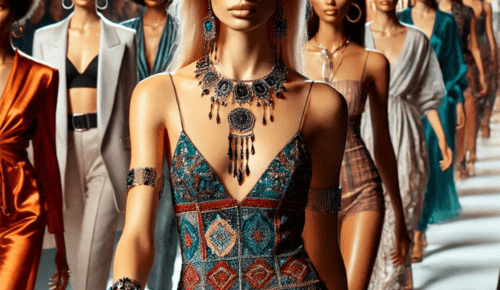How Ethical Jewelry Is Changing the Face of High Fashion has become a transformative topic in recent years as consumer awareness of sustainability and ethical sourcing grows. The rise of lab diamond rings, such as those offered by Lily Arkwright, has been at the forefront of this movement, offering a stunning, eco-friendly alternative to traditionally mined diamonds. These innovations have not only redefined luxury but have also reshaped the way high fashion addresses issues of ethics and sustainability.
The traditional jewelry industry has often been criticized for its environmental and social impacts, from mining practices that devastate ecosystems to the human rights abuses associated with conflict diamonds. Ethical jewelry seeks to change this narrative by prioritizing responsible sourcing, transparent supply chains, and reduced environmental footprints. Lab-grown diamonds are a prime example, as they require significantly less energy and resources to produce compared to their mined counterparts. By adopting these sustainable practices, high-fashion brands are aligning themselves with the values of modern consumers who demand greater accountability and ethical integrity.
High fashion has always been synonymous with exclusivity and prestige, but ethical jewelry is broadening the definition of luxury. Today, consumers value authenticity and responsibility as much as opulence. Brands incorporating ethical practices are finding new ways to connect with their audience, using storytelling to highlight the journey of their pieces from conception to creation. Lab diamond rings, for instance, are celebrated not only for their brilliance but also for the transparency of their origins, providing a compelling narrative that resonates with socially conscious buyers.
Design innovation is another way ethical jewelry is influencing high fashion. Sustainability has pushed designers to think creatively, experimenting with recycled metals, fair-trade gemstones, and lab-grown diamonds. These materials are inspiring bold, contemporary designs that challenge the conventional aesthetics of luxury jewelry. High-fashion houses are now collaborating with ethical jewelers to create exclusive collections that reflect a commitment to both artistry and sustainability. This synergy is setting a new standard for what luxury can and should represent in the 21st century.
Moreover, ethical jewelry is fostering inclusivity in high fashion. By making sustainable options more accessible, brands are democratizing luxury and appealing to a wider demographic. Lab diamond rings, for example, offer an affordable yet equally exquisite alternative to mined diamonds, enabling more people to participate in the high-fashion experience. This shift is reshaping the market dynamics, proving that luxury and accessibility can coexist harmoniously.
The impact of ethical jewelry extends beyond the jewelry itself. It is influencing the broader fashion industry to adopt more sustainable and ethical practices. High-fashion brands are increasingly examining their supply chains, embracing renewable energy, and incorporating recycled materials into their collections. This ripple effect underscores the transformative power of ethical jewelry in setting a precedent for change across the fashion landscape.
As the demand for ethical jewelry continues to rise, it is clear that this movement is more than a passing trend. It represents a fundamental shift in consumer values and industry practices. How Ethical Jewelry Is Changing the Face of High Fashion underscores the importance of sustainability, transparency, and innovation in redefining luxury. Lab diamond rings and other ethically crafted pieces are not just adornments; they are symbols of a new era in fashion—one that prioritizes the planet and its people while celebrating beauty and craftsmanship.
